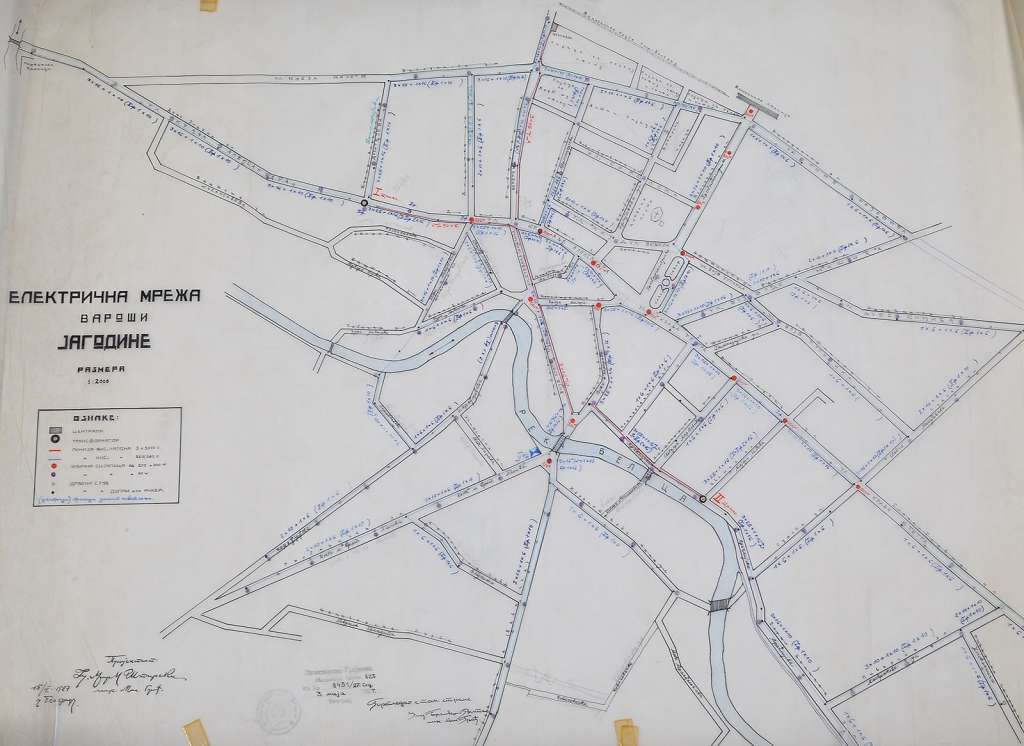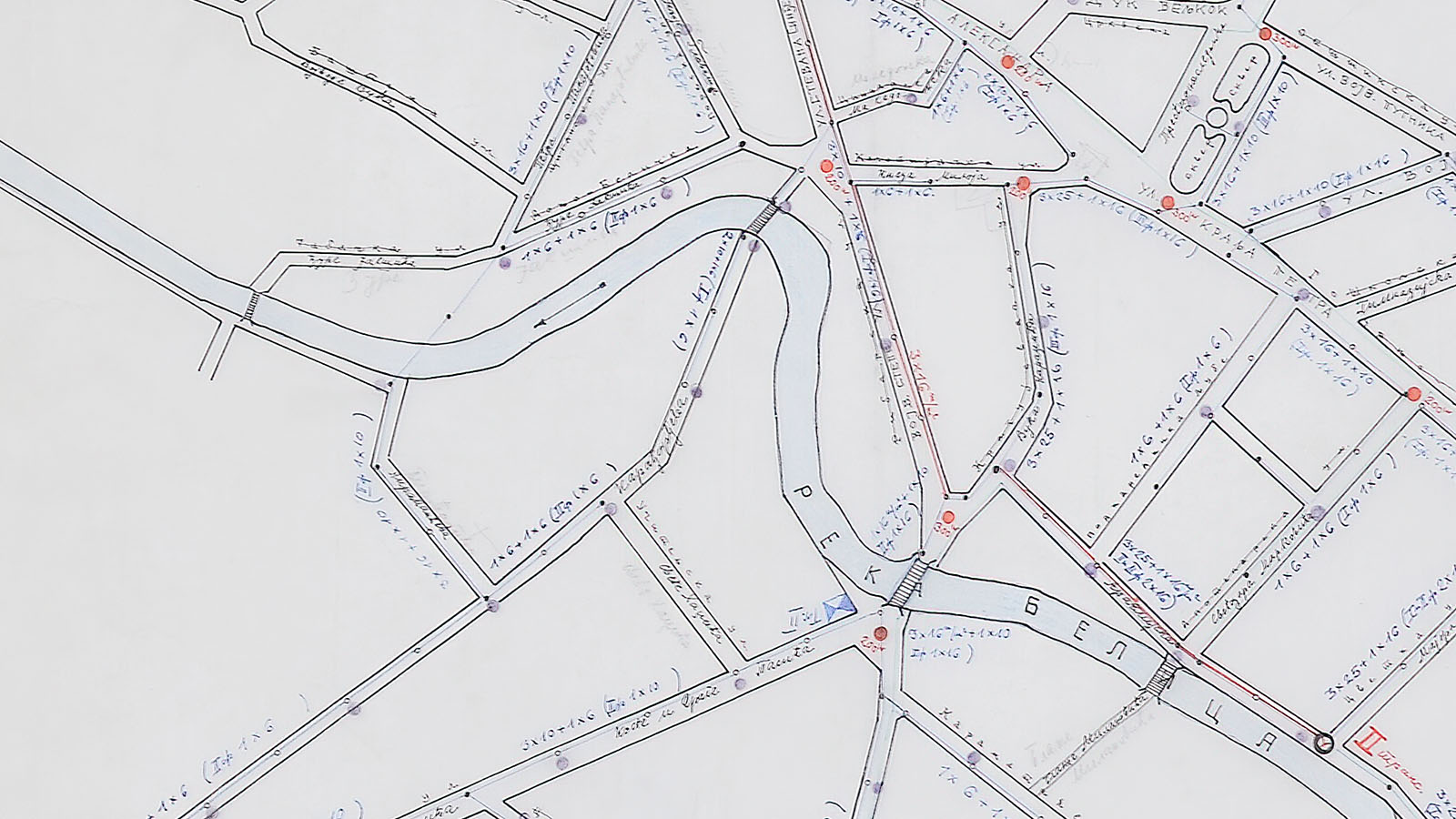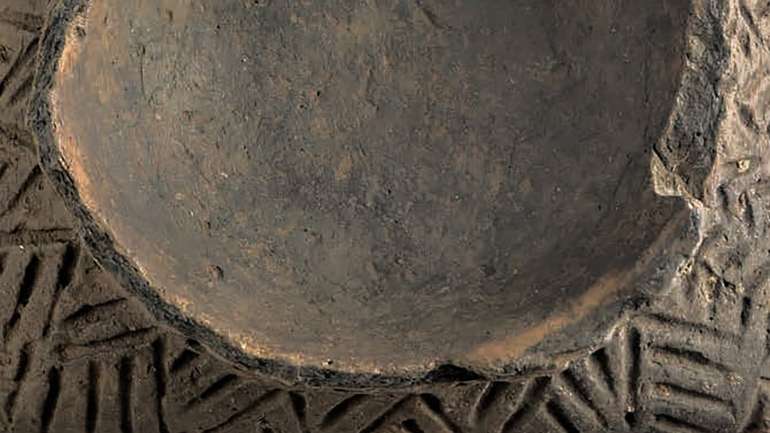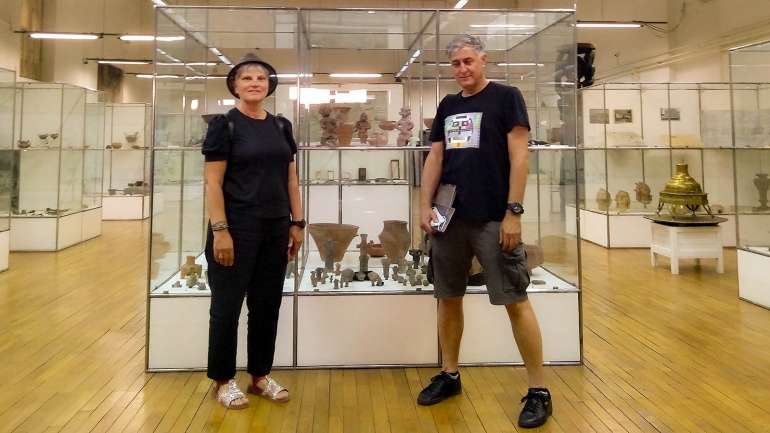By: Branislav Cvetković, museum advisor
The “memory culture”, although used as a scholarly term only in modern period, denotes old practices of maintaining various types of commemoration of past in order to set collective identity. This complex, specific processing of historical heritage is closely related to techniques of organized memory making which can be precisely explained by another term – “invention of tradition”, because phenomena that are thought to reflect centuries-old traditions are actually quite recent. It is known e.g. that the Scottish kilts with developed colour symbolism of clan tartans are not medieval in origin but result of aspirations of the Scottish nobility from the 19th century, just as there were no Russian “babushka dolls” before the end of this same century, or that the so-called “Serbian” šajkača hat does not appear before the wars of the 1870s…
A map from our Museum is interesting regarding the “memory culture”. Miroslav Nikolajević Štirski, an engineer of the Ministry of Construction, made it on April 15, 1927 for the purpose of installing an electrical network in Jagodina, then a town with ca 6,000 inhabitants. This engineer worked as a professor and director of the Technical School in Novi Sad, where he taught draft geometry, technical drawing and physics, and was also the author of the book Electrification of Yugoslavia since 1900, Belgrade 1946. The map displays old and new street names, on the basis of which, supplemented by the old houses plans and corpus of written memories, I compiled for this blog the comparative list with street names of the oldest part of the town from the end of 19th century to this day, which is as interesting as it is instructive and sobering.
Only a few streets had beautiful, fairy-tale names (Garden, Flowery), several were named after prevailing crafts (Carders’ alley, Tobacconists’ Street, Coppers’, Shoemakers’, Hatters’) or the shops, inns, buildings and institutions (Pharmacy’s, Jambas’, Church’s, Mosque’s, Municipal, School’s, Brewery’s, Slaughterhouse’s, Court’s, Railway’s, Cemetery’s). Unfortunately, these unproblematic names were changed already after 1918. Streets with names of road directions as landmarks (Bagrdan, Levač, Ribare, Kovačevac, Kragujevac, Rakitovo) also had their names or locations changed. There were streets with odd names (Tax, Auxiliary), and it is interesting that there were even two Montenegro streets, First and Second… The Main Street was most often renamed which used to have Upper and Lower alleys, as remnants of the Turkish town. The only street the name of which never changed was Karađorđe’s unlike its direction and length. Both Gypsies’ and Aromanians’ Streets have fully disappeared, although today there is an Armenian Street (?). Also, memories of Jovan Kosovljanin, Stepa Stepanović, Milan Piroćanac and Tomas Masaryk are thus obliterated, while there are streets named after characters from folk poetry (e.g. Jug Bogdan), who is claimed, without any scientific basis, to be the historical prince Vratko (even the Nemanid!), allegedly father of Princess Milica. The current Jug Bogdan’s Street, formerly Strosmayer’s, before 1914 was Mosque’s Street as it led towards the mosque located next to the railway before its demolition. Finally, today’s M. Gorky’s Street, formerly Jambas’ Street after the eponymous inn, between 1929 and 1941 was named after the Nobel laureate Aristide Briand (1862-1932), Prime Minister of France for as many as 11 terms, who with the American Frank B. Kellogg (1856-1937), was the author of an highly ambitious world pact to cancel war as a tool in international relations.






